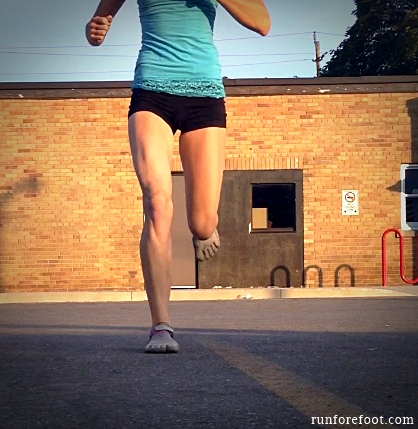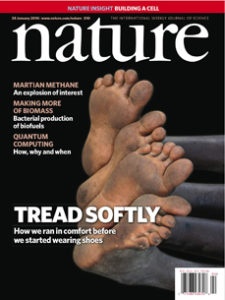In every footwear store you will find various types of minimalist running shoes. Minimalist running, also known as forefoot running, or natural running, involves running in minimalist footwear to promote a forefoot strike and allow the feet to move naturally.

Why Minimalism All of a Sudden?
A decade ago, minimalist running, and thus minimalist running shoes, did not exist because it was assumed running was highly injurious and thick heeled, stability running shoes were needed to protect runners from injury.
- to date, no study has found that thick heeled running shoes prevents running injury
- studies show that thick heeled, cushioned running shoes may result in injury by encouraging heel striking and over-striding which are associated with more forceful, rapid impacts compared to forefoot running
 So, when did the minimalist running movement begin? The minimalist running movement
So, when did the minimalist running movement begin? The minimalist running movement emerged after an inarguably ground-breaking study by Dr. Daniel Lieberman, an evolutionary biologist at Harvard University, and his colleagues, compared the foot-strikes of barefoot East African runners and habitually shod runners (runners who always wear shoes).
They found that the barefoot East African runners landed on their forefoot, not their heel like most shod runners, or joggers.
The researchers compared impact in East African barefoot runners (forefoot strikers) and runners in thick heeled footwear (heel strikers) and found that heel striking in thick heeled footwear produced an intense peak impact transient force, not produced in the barefoot runners. Thus, the peak impact force can be considered a hallmark feature of the heel strike running technique.
Dr. Lieberman’s research program comparing foot strike kinematics in barefoot and shod runners is beginning to untangle if, or how the peak impact force in heel striking may be related to many running injuries.
The data from the study initiated the minimalist running movement which continues to gain popularity as many runners who heel striker become frequently injured. Since forefoot striking appears to be a less forceful style of running, forefoot runners may potentially injure less, allowing for uninterrupted training and performance progression.
Minimalism Means Natural
The rationale behind minimalism is to promote the natural movement of the foot and restore foot strength via optimizing sensory feedback by wearing running shoes with less cushioning, or by simply going barefoot.
The less cushioning under the feet, the better the feet sense the ground helping you avoid potentially painful impacts such as heel striking.
The problem with thick heeled, cushioned running shoes is they restrict the foots natural movement and block sensory input which may cause a runner to strike the ground in a forceful manner.
Overall, the potential benefits of a minimalist running shoe may help revolutionize our understanding of how our feet actually work in running and how we can maintain long-term foot health.
The Take Home Message
To improve foot-strike mechanics when running, minimalist running shoes, aside from running barefoot, may help offset heel strike potential with the added bonus of strengthening your feet.

 . No heel, minor padding and durable sole.
. No heel, minor padding and durable sole.More Great Stuff at Run Forefoot:
References:
Baroody, N. (2013). The effect of a barefoot training program on running economy and performance.
Kram, R. and Tyler, CR. (1990). Energetics of running: a new perspective. Nature 346, 265-7.
Li, JX et al. (2009). Proprioception of foot and ankle complex in young regular practitioners of ice hockey, ballet dancing and running. Res Sports Med 17, 205-16.
Run forefoot, because you are faster than you think!
Bretta Riches
BSc Neurobiology; MSc Biomechanics candidate, ultra minimalist runner & founder of RunForefoot. I was a heel striker, always injured. I was inspired by the great Tirunesh Dibaba to try forefoot running. Now, I'm injury free. This is why I launched Run Forefoot, to advocate the health & performance benefits of forefoot running and to raise awareness on the dangers of heel striking, because the world needs to know.
Latest posts by Bretta Riches (see all)
- Can You Run In Barefoot Shoes? Yes, But DON’T Heel Strike! - 21/07/2024
- Why Cushioned Running Shoes Are Really Bad for Your Feet - 19/07/2024
- Do Cushioned Running Shoes Cause Injuries? - 17/07/2024

Leave a Reply